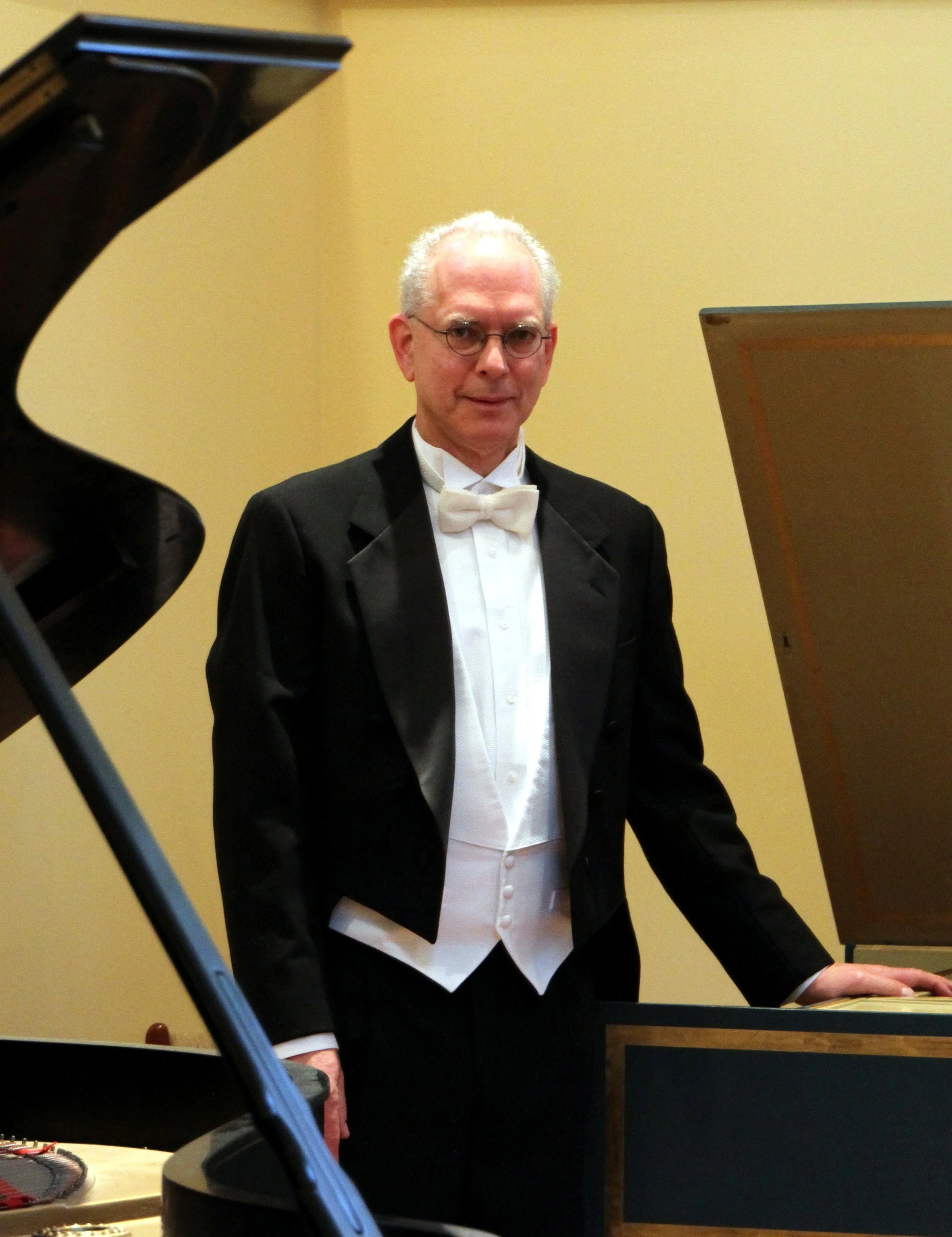Music of the Bach Family
Joel Lazar, conductor
November 15, 2025
Program | Sinfonietta Personnel | Meet our Guest Artist | Meet our Music Director | Supporters
Program
Carl Philipp Emmanuel Bach (1714–1788)
Sinfonia in D, W183 (c. 1775)
1. Allegro di molto / 2. Largo / 3. Presto
Johann Sebastian Bach (1685–1750)
Brandenburg Concerto No. 5, BWV 1050 (1720–1721)
1. Allegro / 2. Affetuoso / 3. Allegro
Rachel Pietkiewicz, violin
Eric Abalahin, flute
Steven Silverman, harpsichord
INTERMISSION
Johann Sebastian Bach
Brandenburg Concerto No. 4, BWV 1049 (1719–1720)
1. Allegro / 2. Andante / 3.Presto
Rachel Pietkiewicz, violin
Colleen Darkow and Eric Abalahin, flutes
Johann Christian Bach (1735–1782)
Sinfonia in B-flat, Op. 18, No. 2 (1775)
1. Allegro assai / 2. Andante / 3. Presto
Our thanks to the Packard Humanities Institute, in collaboration with the Bach-Archiv, Leipzig and Harvard University, publishers of the Critical Edition of the complete works of CPE Bach, for making orchestral material and scores available for free download.
Sinfonietta Personnel
Violin I
Rachel Pietkiewicz, Concertmaster
Sharon Bartley
Sheyna Burt
Kirsten Dalboe
Dawn Levy
Violin II
Seiichi Takedai, Acting Principal
Sarah Brittman
Wendy Chun
Richard Hong
Sachi Rosenbaum
Viola
Michael Garrahan, Principal
Stephen Fisher
Ellen McGlone
Cello
Philip Hopko, Principal
Stephen Czarkowski
Stephanie Herman
Samuel Soltoff
Bass
Robyn Ambrose, Guest Principal
Flute
Eric Abalahin
Colleen Darkow
Oboe
Leslie Jewell
Frank Swann
Bassoon
Katrien van Dijk
Walter Wynn
Horn
Margaret Dikel
Jim McIntyre
Stage Managers
Katrien van Dijk
Edwina Moldover
Meet our Guest Artist
Guest artist Steven Silverman has performed extensively as a pianist and harpsichordist in solo, chamber, and concerto appearances throughout the United States, Canada, and at the prestigious Salle Cortot in Paris, France. The New York Times called Mr. Silverman's New York solo piano debut "a splendid affair...his playing had dimension, atmosphere, energy and discipline—wedded to a sense of rhythm that would not quit.” Bernard Holland, reviewing Mr. Silverman's 1988 New York recital in the Times, said that "it took only a few bars to hear that he is a sound and thoughtful musician, and his recital Saturday gave pleasure." [read more]
Meet our Music Director
Now in his eighteenth season with the Washington Sinfonietta, acclaimed by the Washington Post as “…one of Washington’s premier conductors of both old and new music…”, Joel Lazar was Music Director of the JCC Symphony Orchestra from 1988 through 2008 and has continued with that orchestra in its new identity as the Symphony of the Potomac. He conducted the Theater Chamber Players in engagements at the Kennedy Center, the Library of Congress and on tour from 1986 to 2003, and has appeared as guest conductor with many orchestras and contemporary music ensembles in the Washington area. [read more]
Supporters
Philanthropic Support
The Washington Sinfonietta is a group of professionally trained musicians who dedicate their time and talent to the music lovers who attend our performances and the contributors who support our activities. We invite you to become a member of the Washington Sinfonietta Friends by making a gift today.
Donate at the box office, by mail to Washington Sinfonietta, P.O. Box 6740, Falls Church, VA 22046, or give online at: washingtonsinfonietta.org/donate
The Washington Sinfonietta is a non-profit corporation and 501(c)(3) tax-exempt organization. Your contributions are tax-deductible as allowed by law.
The Sinfonietta wishes to thank the following Washington Sinfonietta Friends for their generous contributions and support:
Individuals
Debra and Anthony Anker*
Dominic Argentieri
Barbara Bankoff
Barbara Burrell*
Eric Cline*
Kirsten Dalboe
Mr and Mrs Jonathan Davis*
Stephen Fisher
Sheryl and David Friedlander
Eve Farber*
Rosanne and Douglas Gochman
Charlotte Goldy*
Tibor and Tania Ham
Sandra Harris*
Mariah Heinzerling*
Stephanie Herman
Gerald Hodgkins
Jane Hughes
Ilene Klinghoffer
Joel and Susan Lazar
Dawn Levy*
Jody Maxmin*
Jim McIntyre and Leila Rao
Edwina Moldover
Sarah Morris*
Mitch Muhlheim
Robin Ngo*
Jennifer Radin*
Susan and Laurence Ramin*
Scott Silverman*
Avery Staples
Robert Staples
Seiichi Takedai
Jon Teske
Nina Uzick*
Walter Wynn
Ben Zeidman*
*in memory of Diane Cline
Corporations/Organizations
City of Falls Church
Blackbaud Giving Fund
Facilities
Father Burl Salmon and Jeff Drake, The Falls Church Episcopal
Volunteers
Those who have thoughtfully volunteered for us include:
Debra Anker
Wendy Chun
Richard Hong
Emilia Jurzyk
Alexia Kauffman
Ilene Klinghoffer
Alice Lieberman
Lucy Lieberman
Charles Manning
Zoe Manning
Margot Mezvinsky
Paul Moscatt
Angela Murakami
Nancy Stanly
Jason Sullivan
Seiichi Takedai
Julie Huang Tucker
All friends are invited to help by donating time and services. Opportunities are available for many interests and levels of expertise, including concert ushers, who receive free admission. If you are interested in volunteering at future concerts, please see an usher for more information.


